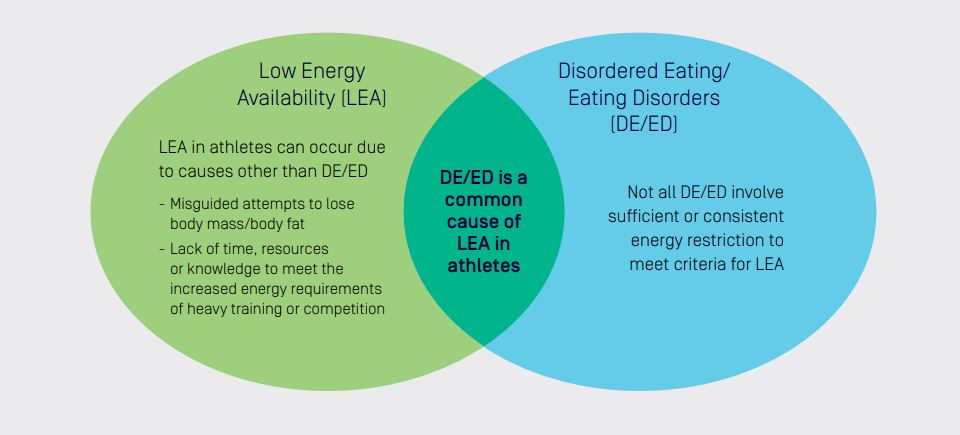Signs and symptoms
Everyone in the sport system has a role to play in recognition and early intervention (‘early identifiers’), and anyone can refer athletes to, and/or consult with, any member of the core multidisciplinary team (doctor, sports dietitian and psychologist) for further assessment and support. Rapport between the athlete and his or her support network (coach, training partners or teammates, service providers) is important in recognising and evaluating DE and EDs.
It is important for all personnel involved in the sport to be aware of the risk factors and warning signs or red flags of DE and EDs and to be informed of effective communication channels for concerns. Some warning signs can occur early (behavioural changes) whereas others such as weight changes may occur later in the person’s trajectory of DE.
Personal attributes which underpin successful performance, combined with the sport environment, may leave athletes vulnerable to disordered eating.
Common questions
Everyone in the high performance sports system has a role as early identifiers of disordered eating. Education and literacy is required around risk factors, warning signs and red flags.
Experiencing an eating disorder
Jessica Smith OAM is a former elite para-swimmer who represented Australia at the 2004 Athens Paralympic Games. Jessica lived with an eating disorder for the majority of her international swimming career and is now an advocate for positive body image, dedicating her life to raising awareness around diversity and disability.
“I battled with an eating disorder for the entirety of my swimming career”.
Contact
For more information please contact disorderedeating@ausport.gov.au

